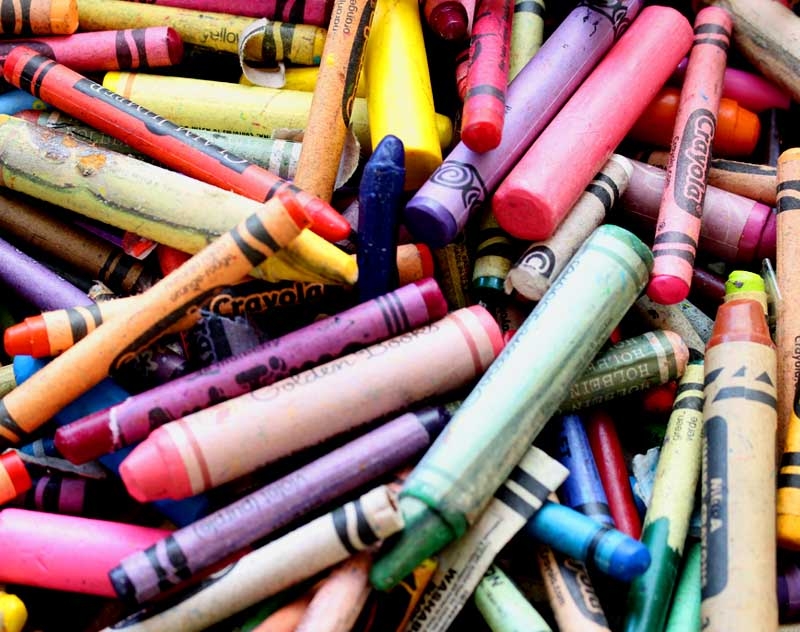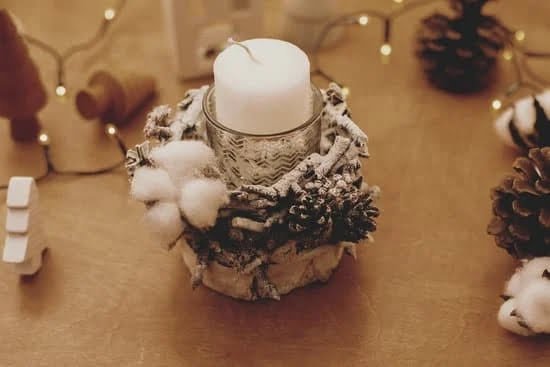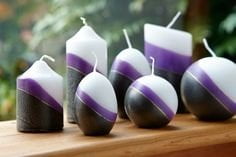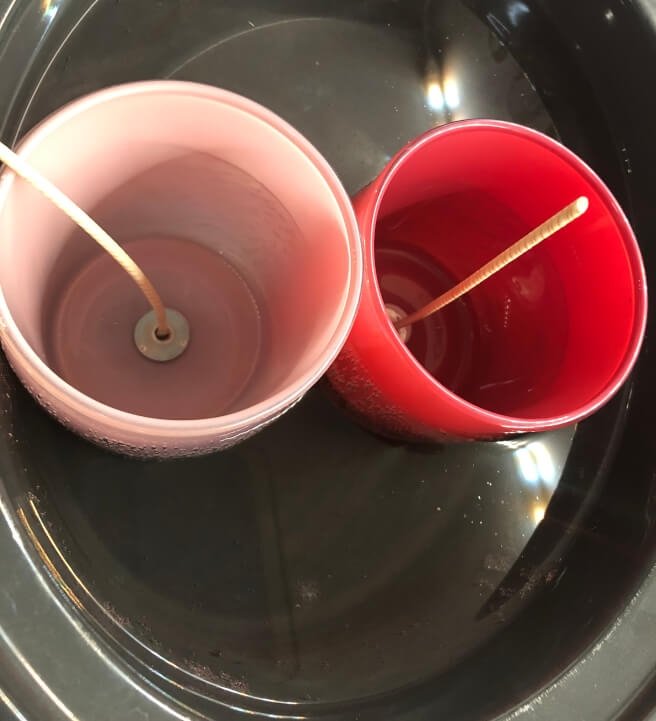Candle making has been a beloved craft for centuries, with enthusiasts constantly seeking new techniques and materials to enhance their creations. One such material that has been a staple in candle making is paraffin wax. In this article, we will explore the use of paraffin wax in candle making, its benefits, types available, safety precautions, and how it can elevate the overall candle-making experience.
Paraffin wax is a popular choice among candle makers due to its versatility and affordability. Known for its ability to hold fragrance and color well, paraffin wax allows for endless creativity when crafting candles. Understanding the intricacies of using paraffin wax can lead to beautiful and long-lasting candles that are perfect for both personal use or gifting.
Whether you are a seasoned candle maker looking to expand your repertoire or a beginner eager to dive into the world of candle making, this guide will provide valuable insights on incorporating paraffin wax into your projects. From step-by-step instructions on creating candles with paraffin wax to troubleshooting common issues that may arise during the process, you will be equipped with all the necessary knowledge to embark on your candle making journey.
Benefits of Using Paraffin Wax in Candle Making
Clean Burning
Paraffin wax is known for its clean-burning properties, making it a popular choice for candle making. When properly formulated and used, paraffin wax candles produce minimal soot and smoke, creating a healthier environment for indoor use. This clean burn also translates to less residue left behind on walls and furniture, making maintenance easier.
Versatile and Easy to Work With
Another benefit of using paraffin wax in candle making is its versatility. Paraffin wax can hold a high fragrance load, allowing candles to emit strong scents when burned. Additionally, paraffin wax can be easily colored, molded, or shaped according to your preferences, making it ideal for creating unique and customized candles. Its low melting point also makes it easier to work with for both beginners and experienced candle makers.
Cost-Effective Option
Compared to other types of waxes used in candle making, paraffin wax is often more affordable, making it a cost-effective option for those looking to create candles in bulk or as gifts. Its availability in various forms and grades also provides options for different budgets and preferences. Whether you are a hobbyist or a professional candle maker, the cost-effectiveness of paraffin wax can make candle making a more accessible craft for all levels of enthusiasts.
Types of Paraffin Wax for Candle Making
Paraffin wax is a versatile and commonly used material in the art of candle making. There are several types of paraffin wax available that cater to different preferences and needs in candle crafting. One of the most popular types is fully refined paraffin wax, which is known for its excellent scent throw and smooth texture when melted. This type of paraffin wax is ideal for creating scented candles that fill a room with delightful fragrances.
Another type of paraffin wax often used in candle making is semi-refined paraffin wax. This variety has a slightly higher oil content compared to fully refined paraffin wax, making it more malleable and flexible when it comes to adding dyes and fragrances. Candle makers who enjoy experimenting with different colors and scents may find semi-refined paraffin wax to be a great option for creating unique and customized candles.
For those looking for a more natural alternative, there are also soy-paraffin blends available in the market. These blends combine the benefits of paraffin wax, such as strong scent throw and easy mold release, with the eco-friendly qualities of soy wax. Soy-paraffin blends are a popular choice among environmentally-conscious candle makers who want to reduce their carbon footprint without sacrificing the quality of their candles.
| Types of Paraffin Wax | Description |
|---|---|
| Fully Refined Paraffin Wax | Ideal for creating scented candles with excellent scent throw. |
| Semi-Refined Paraffin Wax | Great for experimenting with colors and fragrances due to its higher oil content. |
| Soy-Paraffin Blends | Combines the benefits of paraffin wax with eco-friendly qualities of soy wax. |
Safety Precautions When Working With Paraffin Wax
Paraffin wax is a popular choice for candle making due to its affordability and ease of use. However, it is essential to follow safety precautions when working with this material to prevent accidents and ensure a safe environment. One of the primary safety measures to take when working with paraffin wax is to never leave it unattended while it is melting. Melting wax can become extremely hot and pose a fire hazard if not closely monitored.
Furthermore, it is crucial to use a double boiler or a dedicated wax melter to melt the paraffin wax safely. Never heat the wax directly on a stovetop as this can cause it to catch fire. Additionally, always work in a well-ventilated area when melting paraffin wax to avoid inhaling potentially harmful fumes. Using proper protective gear such as gloves, long sleeves, and safety goggles is also recommended to prevent any burns or injuries.
In case of accidental spills or burns while working with paraffin wax, have a first aid kit readily available with burn cream, bandages, and other necessary supplies. It is also important to keep children and pets away from the work area to prevent any accidents. By following these safety precautions closely, you can enjoy the candle making process with paraffin wax without compromising your well-being.
| Safety Precautions | Importance |
|---|---|
| Never leave melting wax unattended | Prevent fire hazards |
| Use proper ventilation | Avoid inhaling harmful fumes |
| Wear protective gear | Prevent burns and injuries |
Step-by-Step Guide to Making Candles With Paraffin Wax
Gathering Supplies
To begin making candles with paraffin wax, gather all necessary supplies including paraffin wax, a double boiler or microwave-safe container for melting the wax, candle wicks, a thermometer, fragrance oils or essential oils for scent (optional), and candle dye for coloring (optional). Make sure to choose high-quality materials to ensure the best results in your candle-making process.
Melting the Paraffin Wax
Start by melting the paraffin wax in a double boiler or microwave. Be sure to use a thermometer to monitor the temperature and avoid overheating. Keep in mind that different types of paraffin wax have varying melting points, so follow the manufacturer’s guidelines for the specific type you are using. Stir the wax gently as it melts to ensure even heat distribution.
Pouring and Setting the Candle
Once the paraffin wax is fully melted and reaches the desired temperature, carefully pour it into your chosen mold. Place a pre-tabbed wick in the center of the mold and secure it in place using a wick holder or chopsticks laid across the top of the mold. Allow the candle to cool and set completely before removing it from the mold. Trim the wick to an appropriate length before lighting.
By following these steps, you can create beautifully crafted candles using paraffin wax that will add ambiance and warmth to any room. Experiment with different scents and colors to customize your creations and enjoy the therapeutic process of candle making with paraffin wax.
Adding Fragrance and Coloring to Paraffin Wax Candles
When it comes to making candles with paraffin wax, adding fragrance and coloring can elevate the final product to a whole new level. The process of adding scents and colors allows for customization and personalization, creating a unique candle that suits your preferences. Here are some tips on how to effectively incorporate fragrance and coloring into your paraffin wax candles:
- Choose high-quality fragrance oils: When selecting fragrance oils for your candles, opt for ones specifically designed for candle making. These oils are formulated to properly disperse in the melted wax, resulting in a strong and long-lasting scent throw. Be sure to follow recommended usage rates provided by the manufacturer to ensure optimal results.
- Select appropriate candle dye: To color your paraffin wax candles, select candle dyes that are compatible with this type of wax. Liquid or dye chips are commonly used for coloring candles and offer a wide range of shades to choose from. Start with a small amount of dye and adjust until you achieve the desired color intensity.
- Experiment with fragrance combinations: Get creative with your candle scents by mixing different fragrance oils to create unique blends. Test out various combinations in small batches before committing to larger quantities. Keep notes on your experiments to replicate successful scent combinations in future candle making projects.
Adding fragrance and coloring not only enhances the aesthetic appeal of your paraffin wax candles but also contributes to the overall sensory experience when burning them. With the right fragrances and colors, you can create candles that evoke specific moods or complement different settings in your home or workspace. Experimenting with different scents and colors is all part of the fun in candle making with paraffin wax.
Troubleshooting Common Issues When Making Candles With Paraffin Wax
When making candles with paraffin wax, it is common to encounter some issues that may affect the quality and final outcome of your candles. Understanding these common problems and knowing how to troubleshoot them can help you create beautiful and long-lasting candles. Here are some of the most frequent issues that candle makers face when working with paraffin wax:
- Sinkholes: Sinkholes are indentations or craters that form on the surface of the candle as it cools. This issue typically occurs when the melted wax contracts as it solidifies. To prevent sinkholes, try pouring the wax at a slightly higher temperature and gently tapping the mold to release any air bubbles.
- Frosting: Frosting is a natural occurrence in candles made from paraffin wax and appears as a white crystalline pattern on the surface of the candle. While frost does not affect the quality of the candle, it can diminish its appearance. To reduce frosting, try pouring the wax at a lower temperature and storing finished candles in a cool place.
- Wet Spots: Wet spots are areas on the candle where the wax has pulled away from the container, creating an unsightly blemish. This issue is often caused by temperature fluctuations during cooling or by using low-quality paraffin wax. To avoid wet spots, ensure that your workspace is at a consistent temperature and use high-quality paraffin wax for your candles.
By being aware of these common issues when making candles with paraffin wax and following these troubleshooting tips, you can enhance your candle making experience and create stunning candles that burn bright and clean.
Remember to always prioritize safety measures such as wearing protective gear, working in a well-ventilated area, and keeping flammable materials away from heat sources when working with paraffin wax. With practice and attention to detail, you can overcome any challenges that arise during the candle making process and produce beautiful candles that will delight both yourself and others alike.
Sustainable and Eco-Friendly Alternatives to Paraffin Wax for Candle Making
When it comes to candle making, sustainability and eco-friendliness have become increasingly important considerations for many crafters. While paraffin wax has been a popular choice for making candles due to its affordability and ease of use, some individuals are turning to alternative options that are more environmentally conscious. There are several sustainable and eco-friendly alternatives to paraffin wax that can still result in beautiful, high-quality candles.
One of the most popular alternatives to paraffin wax is soy wax, which is derived from soybean oil. Soy wax is biodegradable, renewable, and burns cleaner than paraffin wax, producing less soot. It also has a lower melting point, which can make it easier to work with and reduce the risk of burns during the candle-making process. Additionally, soy wax has a longer burn time compared to paraffin wax, making it a cost-effective choice in the long run.
Another eco-friendly alternative to paraffin wax is beeswax, which is produced by honeybees in honeycomb cells. Beeswax candles have a natural sweet aroma and burn cleaner than paraffin wax candles, emitting negative ions that can help purify the air. However, beeswax tends to be more expensive than other waxes due to the labor-intensive process of harvesting it from beehives. Despite this higher cost, many candle makers value beeswax for its natural and sustainable qualities.
Conclusion
In conclusion, paraffin wax plays a crucial role in enhancing the candle making experience. Its versatile nature allows for beautiful and customizable candles to be created with numerous benefits. From its ease of use to the ability to hold colors and fragrances well, paraffin wax is a popular choice among candle makers around the world.
Furthermore, the different types of paraffin wax available cater to various preferences and requirements, ensuring that every candle maker can find the perfect fit for their projects. While safety precautions should always be observed when working with paraffin wax due to its flammable nature, following guidelines and best practices can help prevent accidents and ensure a smooth candle making process.
For those looking for sustainable and eco-friendly alternatives, soy wax and beeswax are excellent options that offer natural properties without compromising on quality. However, it’s important to note that paraffin wax remains a staple in the industry for its affordability and excellent results. Overall, incorporating paraffin wax into your candle making endeavors can truly elevate your creations and bring joy to both yourself as a maker and those who enjoy your beautifully crafted candles.
Frequently Asked Questions
Is Paraffin Wax Good for Making Candles?
Paraffin wax is a popular choice for making candles due to its affordability and accessibility. It has a high melting point, which allows candles to burn evenly and last longer compared to other types of wax. However, some people prefer alternatives like soy or beeswax due to environmental concerns associated with paraffin.
How Do You Make a Candle Out of Paraffin Wax?
Making a candle out of paraffin wax involves melting the wax in a double boiler, adding fragrance and color if desired, then pouring the mixture into a prepped mold with a wick at the center. As the wax cools and solidifies, the candle takes shape and can be removed from the mold once fully hardened.
What Are the Side Effects of Paraffin Wax Candles?
While paraffin wax candles are generally safe to use, there are some potential side effects that users should be aware of. When burned, paraffin wax releases harmful chemicals like acrolein and formaldehyde into the air, which can contribute to indoor air pollution. Some individuals may also experience allergies or respiratory irritation when exposed to these substances over time.

Welcome to my candle making blog! In this blog, I will be sharing my tips and tricks for making candles. I will also be sharing some of my favorite recipes.





